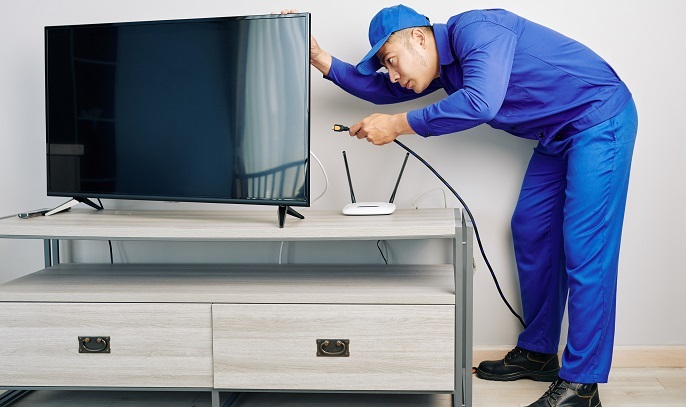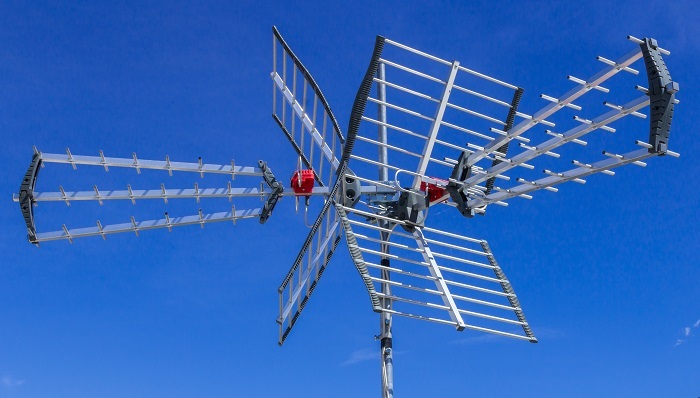
 Data Structure
Data Structure Networking
Networking RDBMS
RDBMS Operating System
Operating System Java
Java MS Excel
MS Excel iOS
iOS HTML
HTML CSS
CSS Android
Android Python
Python C Programming
C Programming C++
C++ C#
C# MongoDB
MongoDB MySQL
MySQL Javascript
Javascript PHP
PHP
- Selected Reading
- UPSC IAS Exams Notes
- Developer's Best Practices
- Questions and Answers
- Effective Resume Writing
- HR Interview Questions
- Computer Glossary
- Who is Who
What is the full form of HIT?
Introduction
Headend Interface Terminal (HIT) is a vital component of the cable television network that oversees signal distribution to customers. It is positioned at the cable network's headend and receives various types of signals from multiple sources, including satellite, terrestrial, and cable networks, which are then processed for distribution to subscribers.

The HIT serves as a vital link between the cable network and the subscriber's set-top box. It receives and delivers signals from numerous sources to subscribers. In addition, the HIT can receive digital signals and convert them to analog signals for transmission through the cable network.
The HIT is a critical component of modern cable networks that allows high-quality signals to be distribubted to subscribers. Its ability to collect and analyze signals from a variety of sources makes it a key component of the cable television network. The integration of the HIT with other network components via various interfaces improves the quality of services delivered to customers.
Components of HIT
The Headend Interface Terminal (HIT) consists of several components that work together to receive, process, and distribute signals over the cable network. The following are the primary components of the HIT
Demodulator The demodulator receives signals from various sources, such as satellite, terrestrial, and cable networks, and demodulates them to extract the original signal.
Modulator The modulator modulates the signals before transmission over the cable network. The modulation process involves converting the signal into a different format suitable for transmission over the cable network.
Scrambler The scrambler encrypts the signals to prevent unauthorized access and ensure the security of the content being transmitted
Descrambler The descrambler decrypts the signals at the subscriber's end, allowing them to access the content.
Digital-to-Analog Converter (DAC) The DAC converts digital signals into analog signals for transmission over the cable network.
In addition to these primary components, the HIT is equipped with a variety of interfaces, including Ethernet, USB, and RS-232, allowing it to work in tandem with other network components. The interfaces provide the monitoring and management of signals delivered through the cable network, maintaining the quality of the services supplied.
Applications of HIT
The Headend Interface Terminal (HIT) is a crucial component of modern cable television networks, and its applications are as follows
Signal Reception The HIT receives signals from various sources, such as satellite, terrestrial, and cable networks, and processes them for distribution to the subscribers. This process ensures that the signals received by the subscribers are of high quality and reliable.
Signal Processing The HIT processes the received signals by demodulating, modulating, scrambling, descrambling, and converting them from digital to analog format. This process ensures that the signals transmitted over the cable network are of high quality and easily accessible to the subscribers.
Signal Distribution The HIT distributes the processed signals to the subscribers over the cable network. This process ensures that the subscribers receive the signals without any interruptions, ensuring high-quality services.
Network Integration The HIT is designed to integrate with other network components, such as amplifiers, splitters, and set-top boxes. This integration makes it easier to monitor and manage the signals being transmitted over the cable network, thereby improving the quality of services provided to the subscribers.
Advantages of using HIT in cable television networks
The Headend Interface Terminal (HIT) provides several advantages when used in cable television networks. These advantages are as follows
High-Quality Signal The HIT ensures that the signals received from various sources are of high quality and reliable. The HIT processes the signals by demodulating, modulating, and converting them into the desired format, making them easily accessible to the subscribers.
Improved Security The HIT's scrambler encrypts the signals to prevent unauthorized access, ensuring that the content being transmitted is secure.
Cost-Effective The HIT's integration with other network components, such as amplifiers and splitters, makes it cost-effective to manage and maintain the cable network infrastructure.
Easy to Monitor and Manage The HIT's interfaces, such as Ethernet, USB, and RS-232, make it easy to monitor and manage the signals being transmitted over the cable network, ensuring that the subscribers receive high-quality services.
Scalability The HIT is scalable, meaning that it can be easily upgraded to meet the increasing demands of subscribers and changing technological needs, making it a cost-effective and future-proof solution.
Flexibility HIT allows for the customization of cable TV networks based on the needs of subscribers. This means that cable TV providers can offer different packages of channels and services to meet the specific needs and preferences of their subscribers.

Efficient Use of Bandwidth The HIT optimizes the use of bandwidth in cable TV networks, ensuring that the available bandwidth is utilized efficiently. This makes it possible to offer a wide range of channels and services to subscribers without compromising the quality of those services.
Centralized Management The HIT allows for centralized management of cable TV networks, making it easier to diagnose and resolve issues when they arise. This reduces downtime and improves the overall quality of services provided to subscribers.
Remote Management The HIT can be managed remotely, allowing for easy troubleshooting and upgrades. This means that cable TV providers can quickly resolve issues without having to send technicians to individual subscribers' homes.
Future-Proofing HIT is designed to be compatible with the latest technologies and standards, such as DOCSIS, MPEG-4, and H.264. This ensures that cable TV providers can easily upgrade their networks to support new technologies and services without having to replace the HIT or other components of the network. This future-proofing capability helps cable TV providers stay competitive in a rapidly evolving market and ensures that subscribers receive the latest and best services available.Conclusion
The Headend Interface Terminal (HIT) is a critical component of modern cable television networks, offering several advantages such as high-quality signal transmission, reliability, cost-effectiveness, scalability, and compatibility with the latest technologies. HIT is essential for cable TV providers to offer high-quality services to their subscribers while staying competitive in a rapidly evolving market.
FAQs
Q1. How is HIT managed and maintained?
Ans The HIT is typically managed and maintained by trained technicians or engineers. It can be monitored and managed remotely, allowing for easy troubleshooting and upgrades. Cable TV providers can also schedule regular maintenance to ensure that the HIT is functioning optimally. The HIT is designed to be cost-effective to manage and maintain, helping cable TV providers reduce their operating costs.
Q2. How does HIT improve the quality of cable TV signals?
Ans The HIT improves the quality of cable TV signals by processing and optimizing the signals received from different sources. It eliminates noise and distortion in the signals, ensuring that they are of high quality and compatible with the cable TV network's standards. This results in a better viewing experience for cable TV subscribers, with fewer interruptions and clearer images and sound.
Q3. How does HIT benefit cable TV providers?
Ans The HIT benefits cable TV providers in several ways. It is cost-effective to manage and maintain, reducing the provider's operating costs. It enables cable TV providers to offer a wider range of services, such as HD channels, video-on-demand, and interactive services. It optimizes the use of bandwidth, allowing providers to transmit more channels and services without increasing their costs. Finally, it is compatible with the latest technologies and standards, enabling providers to stay competitive in a rapidly evolving market.

